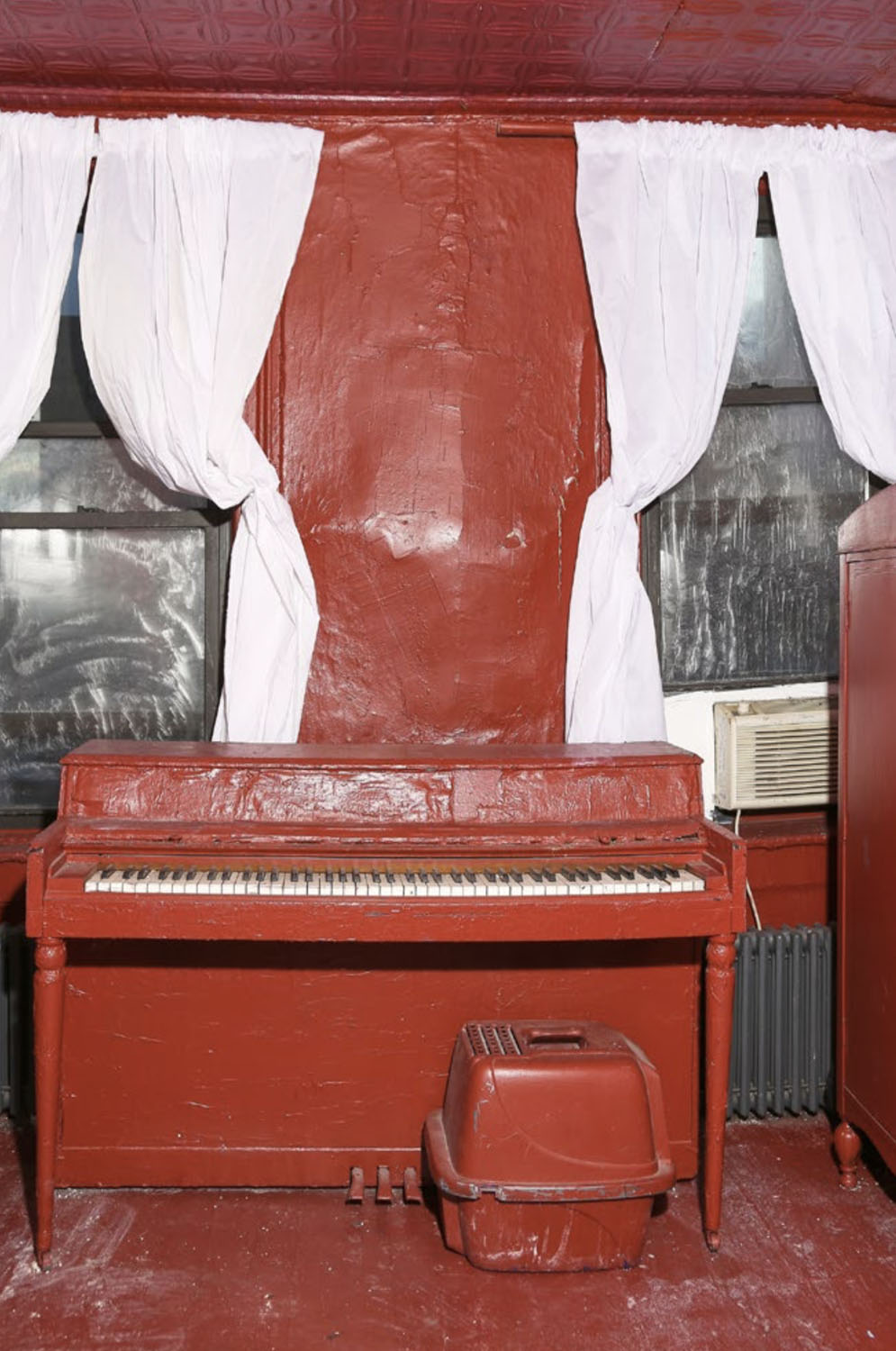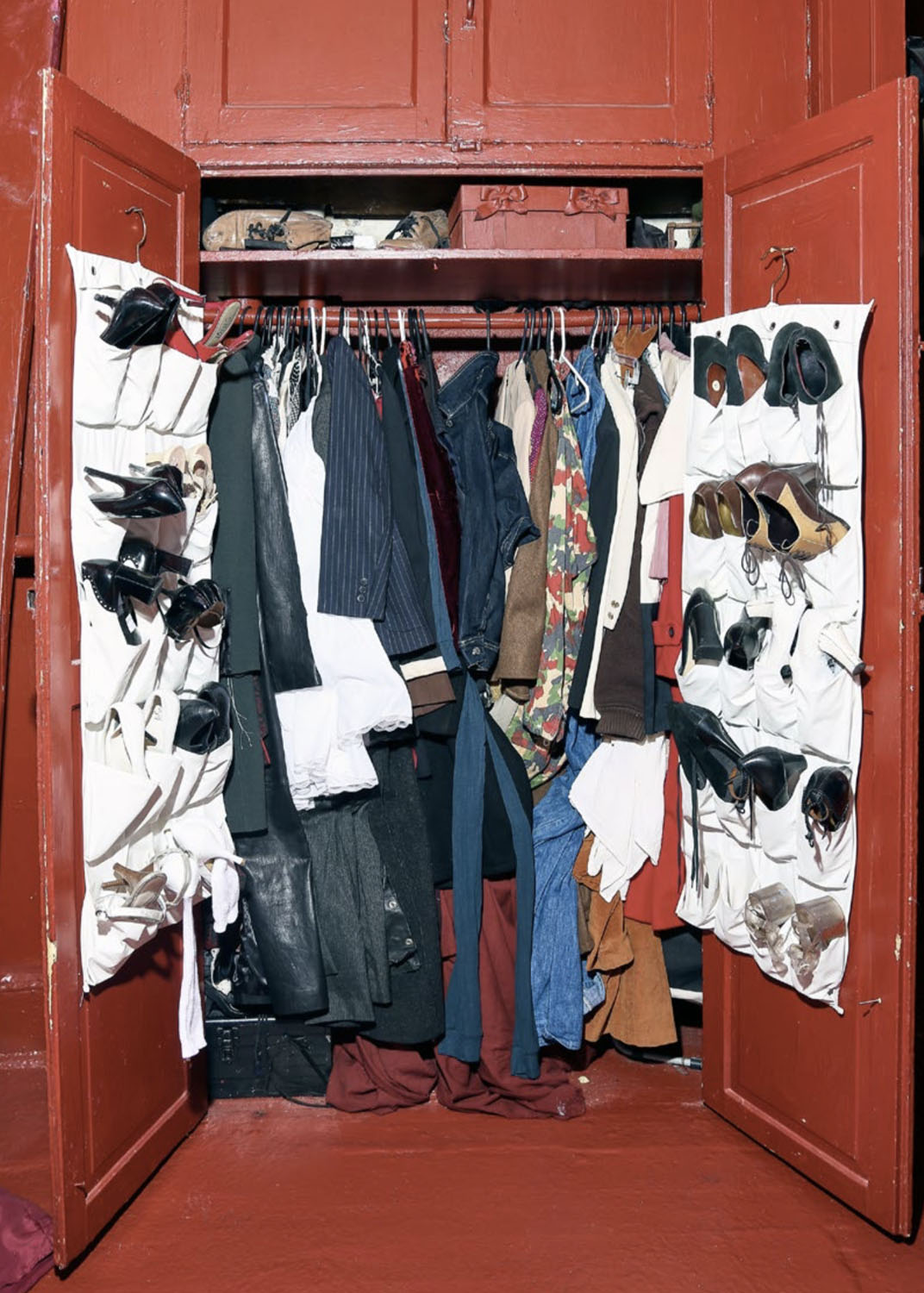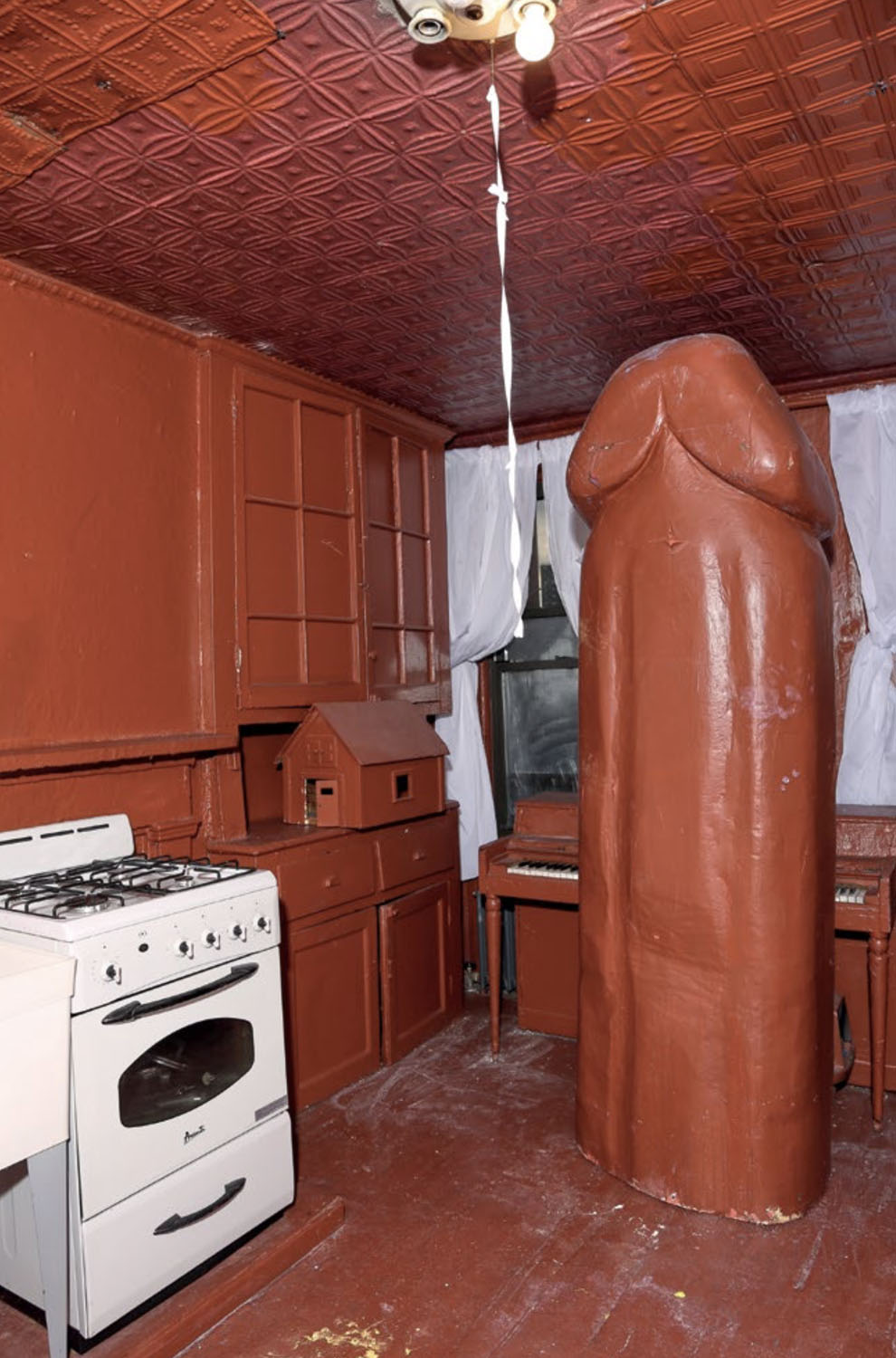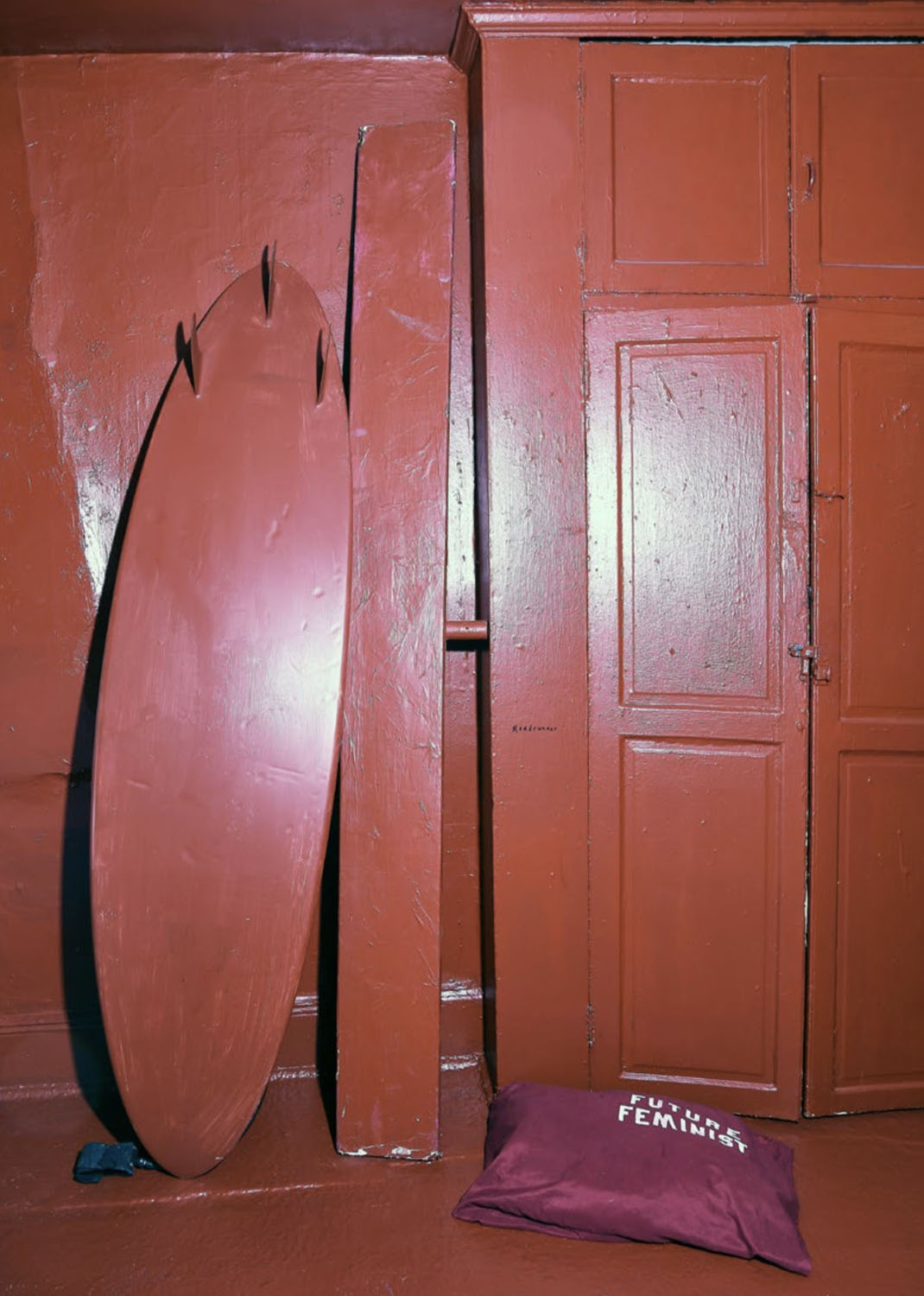KEMBRA PFAHLER
Interview by Michael Bullock
Photography by Vincent Dilio
Apartamento 18, 2016
The biography of the iconic New York artist Kembra Pfahler is as wide-ranging as it is productive. It includes formative years spent in LA’s punk scene, a decade-long ‘day-job’ as a video dominatrix, stints modelling for Playboy, Penthouse, and Hustler, she’s been a muse and model for a diverse range of designers, including Calvin Klein, Rick Owens, and Marc Jacobs (in whose fall/ winter campaign she’s currently starring). She founded a wrestling federation, The Punk Ladies of Wrestling, and is the cofounder of Future Feminism, a movement merging artistic practices and activism aimed at uniting the multiple factions of feminism. Kembra’s accomplished all that in addition to her primary role as an acclaimed visual and performance artist whose work is collected by some of the world’s most important museums, including MoMA, The Whitney, and the Bozar Museum in Brussels. Perhaps the best way to experience her world is to see her live. Her horror movie-inspired, nudist, punk band, The Voluptuous Horror of Karen Black, blurs lines between ritual, performance art, and vaudeville, using irreverence, humour and in-your-face sexuality to destroy tired clichés of femininity. If Kembra’s life and career defy conventions, so does her home. Her East Village apartment is painted floor-to-ceiling in ‘tile-red’, and is organized by three philosophies: minimalism, avalibilism, and wabi-sabi. The result is rare: it has the zen and rigour of a Buddhist monk’s cell, yet it’s cloaked in a veneer of witchery. In person, Kembra’s open, funny, and generous. As we talk she work’s on drawings for her next gallery show, ‘Capital Improvements’, where, this November, she’ll recreate her entire apartment in London at Emalin Gallery, making a convincing case that there need be no boundaries between art and life.
I heard a rumour that you have slaves paint the walls in here for you?
I don’t really have any slaves, but Mike Diana was living with me for a while. One time he started repainting the kitchen California Gold, which is the worst possible colour in the rainbow of wall-paint colours. I screamed at him so much that he was painting the kitchen gold frozen with terror, big hot tears rolling down his cheeks. Maybe that was the story Scott Ewalt was recounting.
So it wasn’t a formal dominatrix situation?
No. I made S&M films for a good 10 years with a film company called Gotham Gold. That was my day job. I would make these films so that I could use their studio to make my own films. Mistress Kimbra’s Island of Hell, stuff like that. I didn’t use the rules of S&M. I really had fun doing it.
Scott also said you made your slaves read to you from Sammy Davis Jr’s biography.
Guilty as charged. That was also for a video.
Why that biography?
I just had it. You’ve got to fill up an hour— I had to come up with something. I thought, ‘Is that sexy? I don’t know—yes. It’s really sexy’. Sammy Davis was so funny.
Why do you paint everything one colour?
I like minimalism. I don’t have any artwork in my house. I don’t put anything on the walls at all because it distracts me from getting new ideas.
What about inspirational images related to current projects?
No. I don’t do pin-up boards at all. If people give me artwork they’re mostly meditational objects. I have very little. We use the big upside-down cross in Karen Black performances. I hang upside down on it. It’s a prop and a piece of furniture.
What’s the philosophy you follow when making things?
It’s called ‘availabism’, which is making the best use of what’s available. A lot of my supplies come from Materials for the Arts, a resource of reuse. It’s been a part of my life since 1983. Many of my decisions are based on what’s available.
Why are your bookshelves empty?
I have an obsession with empty bookshelves. I find them to be one of the most beautiful objects. It represents a new beginning. I dismantled my library about 10 years ago by sharing my books with younger people in my family. Since then I have kept only a few books that I’ve had since I was a teenager: David J Skal’s The Monster Show, Rainer Maria Rilke’s Letters to a Young Poet, and Klaus Theweleit’s Male Fantasies. Those books I actually sleep with because I’m always reading them.
Why are the covers all black? Because you don’t want visual distraction?
Yes. I spray-paint them black. Every day I think, ‘How do I make my lifestyle more minimal?’ If I’m going to include objects in the house that might be visually distracting, I spray them black. I call it expanding on minimalism.
Why not red?
If they’ve written songs about painting things black then that is reason enough for me. It’s also a political gesture. Black should be honoured as a spiritual colour, as one of the greatest colours in the palette, and as a powerful positive force in one’s life—blackness and darkness. Black has always been one of my favourite colours to be wrapped in. Black and this Tile Red that I live with.
You call it Tile Red? How did you pick this shade?
It’s actually what the exteriors of most tenement buildings in the Lower East Side are painted. I’ve just always loved brick—not fire-engine red, not Chinese red, not a red that has blue in it. There’s something cosy about the exteriors of the Lower East Side, and I love bricks as well. If I could have this apartment all bricked, I would. I can see clearly when I’m surrounded by Tile Red. It has something to do with my DNA. It doesn’t make me depressed or negative, it’s not a dreary feeling.
Or aggressive?
Not at all. If I ever feel violent, I have my rock band. I put my aggression into singing. I also have a wrestling federation, called Punk Ladies of Wrestling. That’s a great way to get out your aggression.
I bet. When did you move into this apartment?
In the mid ‘80s.
Did you paint it this colour right away?
Yes. I’ve also painted it black, and once I experimented with a pale yellow.
When you changed the colour you painted everything, like it is now?
Yes. Because we’re shooting in here all the time. I’ve had art studios too, at different times during my tenure here in New York. But I don’t have an art studio currently, so I’m doing everything in this front room.
Do you find it difficult to have no separation between studio and home?
As an availabist, I have to make the best use of what is available. If I practise what I preach I’m not going to complain about what I have and don’t have. I don’t have cancer. It’s 2016 in New York City and I have an apartment. That’s all, end of that conversation.
What are you working on right now?
This November I’m doing a show in London at a gallery called Emalin. I have this wonderful gallerist called Leopold Thun. Leo loved my apartment and wanted me to share my lifestyle with people. So for my show I’m going to recreate this place. I’m painting the gallery Tile Red and bringing as many objects as I can from this apartment. Wabi-sabi; do you know what that is?
No.
It’s a Japanese philosophy, the art of imperfection. It’s about loving things as they are. Meaning, it’s the crack in the cup that makes it beautiful. The effect of entropy on objects is beautiful. These walls have incredible personality, a life to them that Sheetrock and a white paint can’t have. Some people prefer brand-newness. I like brand-newness, too. But it would be like war to incorporate modernity into this environment.
What was your house like growing up?
Funny you ask, because one of my meditations is visualising each room in my childhood home. I love my mother’s taste; it was passed on to me, and we’re very similar. It was a Spanish-style home on two lots in Hermosa Beach. We had white carpeting with pink-and red-checkered wall curtains, low to the ground, black-lacquered Japanese furniture. Houndstooth black- and white-checkered couches and chairs. My room was pink and light pink with animal découpage wall hangings that my mother made: lions, giraffes, tigers, and zebras.
It sounds very ‘decorated’.
Yes! I loved my mother’s taste; it had a severeness, and it was extremely opposed to the beach aesthetic.
Does your mom appreciate the way you live?
She thinks it’s too dark, but overall she appreciates my aesthetic. I have presented my family with some pretty severe imagery over the years, like my sewn-up vagina piece, my band called The Voluptuous Horror of Karen Black, lots of nudity, and many extreme, transgressive performances. My mother and stepfather thankfully never rebuffed my choices and always showed up to see my work. It wasn’t easy for them in the ‘80s, when it wasn’t popular to be a performance artist, when it wasn’t popular to look death metal. They still supported me.
That’s so great. And your dad?
My real father, the surfer Freddy Pfahler, stopped talking to me, and he still won’t talk to me because of my aesthetic. He was from the ‘50s and ‘60s.
Strange. I understand surfing in that early time period to be a bit outsider, like a countercultural lifestyle?
When my dad was surfing it wasn’t a cultural position. He started surfing before surfing was commoditised. Surfing was just part of life. There wasn’t Billabong, Sex Wax, or surf competitions. Surf culture got co-opted by corporations. My dad wasn’t part of that, he’s very stoic. My work is hardcore; if it offends him, then it’s done its job.
I love the Cookie Mueller quote that you use, ‘If you show your vagina in public, you’ve ruined your life and career forever’. You said you were happy to get that over with immediately.
I’m being facetious when I use Cookie’s quote because nudity has never harmed me. In fact, it has been a way to reclaim my body and take my power back as a female.
Reclaim it from who?
Growing up in Malibu, I always felt lesser than others. People would always say, ‘You’d be so much prettier if you dyed your hair blonde and lost more weight’. Really? Can we talk about something else, rather than my waist size? It just gets to be tiresome. That’s California’s culture, constantly obsessed with appearance. It didn’t destroy me too much. It was just annoying. For whatever happened to me when I was younger, thankfully my parents and my stepfather and my friends supported my art adventures, and I stuck with it. Now I get to be 55 years old. It’s a privilege.
The Wikipedia entry on The Voluptuous Horror of Karen Black says that your band ‘relishes destroying notions of female beauty rooted in purity and innocence’.
I’ve always preferred the black-haired beauties from horror films: Barbara Steele, Karen Black, Lily Munster, Carroll Borland. They were awesome looking and had a severe, angular, hard beauty. I craved their look. I made myself look like them.
You weren’t naturally in that category?
No, I looked like an Irish mutt. I’ve been working on my look my entire life. I’ve always wanted to be more exotic looking, and I learned how to do that a long time ago by tailoring and cutting my forehead back. I’ve changed my face a little bit. I draw my face on, essentially; it’s a work of graphic art, my face. I created it myself.
Is there a separation between the performance character and who you are?
I don’t think so. People always ask, ‘How did you create this character you play in The Voluptuous Horror of Karen Black?’ I don’t know what they’re talking about, the character in my band is simply me wearing a cos-ume. That’s it.
Do you do these little rituals around holidays? Around Christmas time, I bet you wear a red sweater or stand underneath mistletoe? Getting dressed up in that costume prepares me to have more fun in that ceremony. It’s an extreme transformation as a way to deliver the ideas and messages.
For you the performance is a ceremony?
Yes, totally. Definitely a ceremony, a ritual.
Would you consider it witchcraft?
I’m not an occultist. I don’t practise group religions on any level, with anyone. What I do comes naturally for me, and luckily my upbringing and my ethics and morality were shaped by some really nice people. The first wave of punk rockers from Los Angeles instilled values in me that have helped me my entire life: make original work, never steal other people’s ideas, be respectful. I have an alternative-culture morality. I didn’t grow up with religion, and I have always felt within the realm of the occult women were treated as ceremonial objects rather than individuals. I’ve never wanted to be lying on a table with people standing around me, with hoods on or something.
So instead you chose to be the master of your own ceremonies?
If I were an occultist for sure I wouldn’t be talking about it in any form whatsoever, because also you have to realise that for anyone involved in magical ceremony, silence is a virtue. I would never talk about any of my magic. Magic should be personal. Occultists have acted like predators towards me since I was very little.
Because your look held an ideal for them?
That, and because my mom gave me a funny name. They would be like, ‘Oh, Kembra, you’re such an unusual little person. You’re going to grow up to be this or that’. Ever since I was a little kid, people always wanted me to join their witchcraft covens. Los Angeles is the land of cults, whether it’s Agape, Scientology, or the Unarius Academy of Science. California quackery.
Kembra’s your birth name? What does it mean?
Yes. It’s a hippie name that my mom made up. It means nothing.
Have you met others?
I don’t personally know any, but I’ve searched my name on Wikipedia and found that there are other Kembras.
How do you begin to formulate your ceremonies?
I set the temperature probably like anyone else does, if they’re making art. You know that feeling you have when you’re about to pick out a wonderful outfit, and you just know it’s right. It’s the same feeling. What I do in my life is create a climate that allows me to be visited by my artistic muse. Your mood, if you’re open to it, tells you what it wants you to be. Sometimes I just sit in a state of complete stillness and pause and wait for my ideas to come through me. Or when decorating my apartment—constantly redecorating and repainting is a huge part of my artistic practice. If I’m getting ready for a new show, I’ll repaint the walls Tile Red, scrub all the windows, and move all the objects from one side of the house to the other. I’ll spend eight hours a day in here excavating and re-acclimating myself to the paper, getting all my materials ready like I’m preparing for battle. I gather all my fetishes, all my war instruments together, polishing my guns, as it were.
So that’s what you’re doing now as you get ready for London?
Yes. I’m excited; I’ve been exhibiting for 16 years in New York City and around different galleries, but I’m no longer part of that gallery system.
Your last show here was ‘Future Feminism’?
That was Anohni, CocoRosie, Johanna Constantine, and me. ‘Future Feminism’ changed my life forever. How we created that piece set a new paradigm for how I work today. We went away together on many retreats and spent 10 hours a day discussing our politics and ethics, trying to develop something we felt we could create as a group—something that reflected how we felt about the spirit of our times. We wanted to coauthor a piece. What we came up with was ‘Future Feminism’.
That’s how you wrote the 13 Tenets of Future Feminism?
Yes. It was our first attempt at using language to describe how we felt, rather than making visuals or performances. We decided to use clear and simple language to describe our politics. We etched each tenet onto pink onyx crystal. Those sculptures are among the most beautiful things I’ve ever seen. All the decisions we made about them were made as a group. It was never a majority decision, it was always consensus. The 13th tenet—the future is female—wasn’t met with any positivity. We were ostracised for that, people accused us of being sexist and racist. They thought we were advocating a female separateness. But since ‘Future Feminism’, I’ve seen people all over the world embrace the idea that the future is female.
You injected that forgotten phrase from the ‘70s back into culture. It’s become a popular T-shirt.
But in 2014 we were completely ostracised for it. Our community turned on us. There were hate letters, friend breakups, the show made me physically ill because of the duress we were under. After the show was over the people that had attacked us abandoned the discussion and went on to attack other people. Kenneth Anger once said that when you try to have political discourse using clear, simple language you invite a pecking order, like chickens pecking at each other’s heads. That’s what it felt like. Although I’m no worse for wear because of it. In fact, it made me commit to being a future feminist.
I never would have imagined that response. I thought that show was important. It was useful to see a clear contemporary vision that defined what feminism is right now.
I wanted to publish a book of all the hate mail. Anohni and I were left to clean up the mess afterwards. It was painful. Anohni’s new body of work is an album called Hopelessness, where she’s also continuing to activate the principles behind ‘Future Feminism’. That show turned me into more of a sharing type of person, where I do more service—I started teaching performance classes after that show, but, man, it was really painful. I’ve never experienced such malice.
Can you sum up their critique?
They thought we wanted to change feminism or say that this is how feminism should be in the future. We were saying that we will have no future without feminism. We were proposing that all feminists pull together to start problem solving outwardly rather than inwardly. Recognising that in the world we’re living in, the current systems are broken and we can’t sustain ourselves the way things currently are. Do you think we can?
I’m optimistic. I’m hopeful that the many divisions we’re experiencing mean we are on the cusp of new, hopefully better possibilities. We’re finally having mainstream conversations about race, gender, sexual identity, police brutality, and income inequality—dialogues that have been suppressed for the past few decades. These conversations could lead to a better understanding, but right now it looks pretty dark.
Exactly. Everyone feels very vulnerable because these issues are in flux and they’re used to the systems as they were.
This moment is the baby boomers’ last stand, and they are freaking out. It is like a death rattle.
I agree. I’ve seen a death rattle. Have you?
No. A death rattle is the most violent death you’ll ever see. It’s like a horror film. People go kicking and screaming for their very last breath, their eyes turn yellow, their fingers scrape the walls, loud screams, soul coughing. It’s a real thing. It’s not easy to watch. I think culturally that is what we’re observing now.
It’s the death rattle of the white capitalist, heteronormative, patriarchal baby-boomer worldview. Things have exploded, and we don’t know how the pieces will fall into place. I guess the fear of the unknown is what can paralyse people. There’s this word on people’s lips, the liminal phase, it’s a beautiful word.
I’ve never heard that term.
I’ll look it up for you. I learned this word from the young people that I work with in the performance class I teach. Liminal: of or relating to a transitional or initial stage of a process, occupying a position at, or on both sides of, a boundary or a threshold. Liminality is a Latin word which means a threshold. It is the quality of ambiguity or disorientation that occurs in the middle stages of a ritual when participants no longer hold their preritual status. But they’ve begun the transition into a status they’ll have when the ritual is complete. I feel the sense of liminality. Not to sound too metaphorical or wishy-washy, but I feel we’re at the threshold of a new phase.









